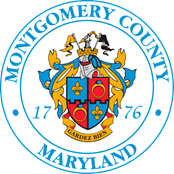Montgomery County, Maryland Información en español

Press Releases
Council Approves Green Building Tax Credit Legislation to Meet Climate Targets
For Immediate Release: Tuesday, September 29, 2020
Councilmembers Friedson and Riemer introduced bill to accelerate construction and retrofits of energy-saving sustainable buildings
ROCKVILLE, Md., September 29, 2020—The Montgomery County Council on Tuesday unanimously approved legislation to accelerate the construction of highly energy efficient buildings and green retrofitting of existing buildings. Bill 10-20 dramatically improves an existing County green building property tax credit by prioritizing energy reduction in new and existing commercial and multifamily buildings and ensuring incentives are given only for buildings that surpass requirements of the County’s building code.
Councilmembers Andrew Friedson and Hans Riemer were the lead sponsors of the legislation. Council President Sidney Katz co-sponsored the bill.
Councilmembers Friedson and Riemer based the legislation on the recommendations of a work group made up of key stakeholders from the County government, climate groups and the local real estate sector. Over the course of a year, the work group carefully scrutinized the current green building tax credit, identifying its limitations and proposing significant improvements.
“This is a powerful example of the public and private sectors working together to combat the climate crisis, which will be critical to reaching our County’s carbon emission reduction goals,” Councilmember Andrew Friedson said. “We must turn climate rhetoric into real results.”
The County has committed to reducing emissions by 80 percent by 2027 and 100 percent by 2035. Energy consumption in commercial buildings accounts for 26 percent of greenhouse gas emissions in the County, according to the most recent greenhouse gas inventory. Significantly reducing energy usage and emissions requires retrofitting existing buildings and incentivizing new construction to achieve greater efficiency standards.
“We need to reduce the energy consumption of our buildings if we are to ever have a chance of meeting our climate goals,” said Councilmember Hans Riemer. “Reducing energy use is expensive and complicated work, and it will take time. The changes to the green building tax credit proposed in this legislation will incentivize our private-sector partners to go further than ever before in designing energy-efficient buildings.”
Under current law, the tax credit is tied to the Leadership in Energy and Environmental Design (LEED) Green Building rating system or its equivalent. New and existing buildings meeting higher levels of LEED certification receive increasingly higher levels of the property tax credit for five and three years, respectively. The County caps the overall tax expenditure for this credit at $5 million annually. Since its inception, the County has awarded $33.4 million in credits, across 62 buildings.
However, the credit has been regularly oversubscribed in the past few years. The County also adopted a version of the International Green Building Code (IgCC) in 2017, which makes many of the elements of LEED certification compulsory.
To make the credit more effective and better align it with the County’s greenhouse gas reduction effort, Bill 10-20 followed the work group recommendations by making the following changes to the green building tax credit:
- Creates a new two-tier structure for the credit.
- The first tier ties the amount of the credit to the energy reduction level relative to the existing building code. The higher the energy reduction level, the higher the credit.
- The second tier assigns a bonus credit, if the buildings also meet the highest levels of widely-used green building certifications such as LEED, PHIUS+, and BREEAM.
- Removes the annual cap on the credit for new buildings and maintains a $5 million cap annually for existing buildings.
- Sets a four-year limit on the credit for new buildings and a two-year limit for existing buildings.
Read the work group’s report here.
Read Bill 10-20 here.
# # #
Release ID: 20-384Media Contact: Aaron Kraut 240-777-7962, Ken Silverman 240-777-7828